Goyang travel - South Korea, Asia
Goyang, a vibrant city located just northwest of Seoul, is a fascinating blend of historical significance, architectural diversity, and cultural richness. As one of the largest cities in Gyeonggi Province, Goyang has evolved from its humble beginnings into a modern metropolis, all while preserving its unique heritage. The city's name, derived from the historical counties of Gobong and Deokyang, reflects its deep-rooted past, dating back to its establishment in 1413 by King Taejong.
Over the centuries, Goyang has faced destruction and reconstruction, particularly during the Korean War, which left significant scars on its landscape. However, the resilience of the city is evident in its restoration efforts, which have allowed it to retain its historical essence while embracing modernity.
Population: Approximately 1,100,000 in 2024.
Economy: The city's economy has shifted from agriculture (rice and dairy farming) to more modern industries. In the 1990s, many furniture factories and warehouses moved to Goyang as they were pushed out by rising real estate prices in Seoul.
Landmarks: Seooreung Royal Tombs, Haengju Fortress, Bukhansanseong Fortress, Korean War Monument to the Philippine Armed Forces, Ilsan Lake Park, KINTEX (Korea International Exhibition Center)
South Korea
Overview of Goyang
History & Cultural Influence
The historical roots of Goyang are deeply intertwined with its strategic location. One of the most notable landmarks is the Haengju Fortress, which played a crucial role during the Japanese invasions of Korea in the late 16th century. This fortress not only served as a military stronghold but also became a symbol of resistance and resilience, shaping the identity of the city. The preservation of such historical sites reflects Goyang's commitment to honoring its past while embracing the future.
Throughout the years, Goyang has undergone significant transformations, particularly during the post-war era when rapid urbanization took place. The city transitioned from an agricultural base to a bustling urban center, accommodating the influx of residents seeking proximity to Seoul. This evolution has been marked by a blend of old and new architectural styles, creating a unique skyline that narrates the city’s journey through time.
Interaction with The Locals
Visitors to Goyang can expect a warm welcome from the friendly locals. Locals are often eager to help tourists navigate the city and share their culture. English proficiency may vary, but many younger residents have a good grasp of the language. Expect to see locals enjoying the city's parks and cultural events. The annual Goyang International Flower Festival is a popular event that brings the community together. Locals also frequent the city's shopping districts like Ilsan Garosugil, which has a lively atmosphere
Top Attractions in Goyang
- KINTEX (Korea International Exhibition Center)
Korea's largest exhibition and convention center, showcasing cutting-edge design and hosting major international events. Its vast halls and state-of-the-art facilities make it a hub for business and cultural exchanges.
Ilsan Lake Park: A sprawling urban oasis covering 1.03 million square meters. This park features beautiful landscaping, walking trails, and a large artificial lake. It's especially famous for hosting the Goyang International Flower Festival in spring.
- Goyang Aram Nuri Arts Center
A modern cultural complex dedicated to the performing arts. Its unique architecture houses multiple venues for concerts, plays, and exhibitions, serving as the city's primary cultural hub.
- Haengju Fortress
A historical site atop Mount Deokseongsan, offering panoramic views of the surrounding area. This restored fortress played a crucial role in the Japanese invasions of Korea in the 16th century and now provides insights into Korean military history.
- Seooreung Royal Tombs
A UNESCO World Heritage site featuring the royal tombs of five Joseon Dynasty kings and queens. The serene forested area surrounding the tombs offers a peaceful retreat and a glimpse into Korea's royal burial traditions.
- Goyang Starfield
One of Korea's largest shopping and entertainment complexes. This modern mall combines retail therapy with diverse dining options and leisure activities, embodying Goyang's contemporary urban lifestyle.
- Hangnae Public Garden
A charming ecological park known for its beautiful metasequoia trees. The garden changes its appearance with each season, offering visitors a tranquil space to enjoy nature within the city limits.
Must-Try Dishes in Goyang
Goyang's cuisine is a delightful reflection of its rich cultural heritage and modern culinary innovations. This vibrant city offers a diverse array of dishes that highlight local ingredients and traditional cooking methods. From the comforting warmth of Eel Noodle to the spicy kick of Fish Stew, Goyang's food scene is a blend of flavors that cater to both locals and visitors.
- Eel Noodles (장어국수): A popular dish near Haengjusanseong Fortress, eel noodles combine grilled eel with a savory broth and noodles. The dish is not only delicious but also considered a health food, thanks to the nutritious properties of eel. Given the proximity of eel farms at Haengju Dock, this dish is particularly fresh and flavorful, making it a local favorite.
- Spicy Fish Stew (매운탕): This traditional dish features a rich, spicy broth made with loach (a type of freshwater fish) and an array of vegetables. Often served with noodles or sujebi (hand-pulled dough), the stew is known for its bold flavors and health benefits. A well-known restaurant near Goyang City Hall enhances the dish with fragrant chives and sesame leaves, making it a hearty and satisfying meal.
- Ilsan Noodle Soup (일산칼국수): This comforting noodle soup can be made with chicken or clam broth, creating a deliciously rich flavor. Served with a generous portion of noodles and accompanied by kimchi, it’s a staple in many local restaurants, especially in Dong-gu and Seo-gu. The popularity of this dish means that some restaurants often have long lines, a testament to its beloved status among locals.
- Goyang Rice Makgeolli (고양 쌀 막걸리): Known for its unique flavor, Goyang Rice Makgeolli is brewed using mineral water from Jugyo-dong and has a balanced taste of sweetness, sourness, and bitterness. This traditional rice wine is a perfect accompaniment to many local dishes and is easily found in restaurants throughout the city, making it a must-try for those looking to experience authentic Korean beverages.
- Gawaji Rice (가와지 쌀): This special rice variety, cultivated in Goyang, is known for its sticky and bouncy texture. Gawaji rice is less polished, retaining more nutrients, and is often used in various dishes, including traditional rice cakes and desserts. It represents Goyang's agricultural heritage and is a point of pride for local farmers.
- Kimchi (김치): While kimchi is a staple throughout Korea, Goyang's version made with fresh young radish from the region is particularly noteworthy. Visitors can even participate in kimchi-making experiences, allowing them to engage with the local culture while enjoying this iconic dish.
Festivals & Local Celebrations
1. Goyang International Flower Festival
When: Late April to Early May
Where: Ilsan Lake Park
What to Expect: Celebrate spring in full bloom at the Goyang International Flower Festival, one of the largest floral events in South Korea. The festival showcases an exquisite collection of flowers from around the globe, garden exhibitions, and floral art displays. It's a paradise for horticulturists and nature lovers alike, offering workshops, cultural performances, and interactive activities for all ages.
2. Goyang Lake Art Festival
When: September
Where: Ilsan Lake Park
What to Expect: As the warmth of summer transitions to the mellow coolness of autumn, the Goyang Lake Art Festival transforms Ilsan Lake Park into a vibrant canvas of artistic expression. This event features live music performances, art installations, and food stalls that highlight local and international cuisine. The festival's highlight is the spectacular night-time multimedia show over the lake, combining light, music, and water effects.
3. Korea K-Pop World Festival
When: October
Where: Various venues across Goyang
What to Expect: Dive into the heart of Korean pop culture with the Korea K-Pop World Festival. This event attracts K-pop fans from across the globe to witness performances by some of Korea's top idols as well as up-and-coming artists. The festival includes dance competitions, fan meet-and-greet sessions, and merchandise booths, making it a must-visit for any K-pop enthusiast.
4. Goyang Cultural Night Market
When: Fridays and Saturdays from May to October
Where: Haengju Art Park
What to Expect: Experience the local charm and bustling nightlife at the Goyang Cultural Night Market. Wander through a maze of stalls featuring traditional crafts, vintage goods, and handmade artifacts. The market is a fantastic place to sample traditional Korean street food, engage with local artisans, and enjoy impromptu performances by street musicians and artists.
5. Goyang Autumn Harvest Festival
When: November
Where: Agricultural Technology Center
What to Expect: Embrace the harvest season at the Goyang Autumn Harvest Festival, a celebration of agricultural bounty and rural traditions. This festival offers visitors a chance to participate in harvesting activities, traditional cooking demonstrations, and agricultural workshops. It's a perfect opportunity to learn about the local farming practices and to taste fresh, organic produce directly from the source.
6. New Year's Countdown
When: December 31st
Where: Ilsan Lake Park
What to Expect: Ring in the New Year with Goyang's spirited New Year's Countdown. Join locals and visitors alike in a festive celebration filled with live music, dazzling fireworks, and a communal countdown to midnight. It's a joyous occasion to reflect on the year past and usher in new beginnings with enthusiasm and hope.
What to Do in Goyang
- Hiking in Bukhansan National Park: Explore the scenic trails and breathtaking views of Bukhansan National Park, located just a short drive from Goyang. The park offers a variety of hiking routes suitable for all skill levels, allowing visitors to immerse themselves in nature while enjoying panoramic vistas of the city.
- Kayaking on Ilsan Lake: Rent a kayak and paddle around the serene Ilsan Lake, taking in the peaceful surroundings and spotting local wildlife. The lake is a popular spot for leisure activities and hosts various cultural festivals throughout the year.
- Visit the Goyang Korean Folk Village: Step back in time at the Goyang Korean Folk Village, where visitors can experience traditional Korean culture firsthand. Explore authentic replicas of historical buildings, watch demonstrations of traditional crafts, and participate in cultural activities like making Korean rice cakes.
- Attend the Goyang International Flower Festival: Time your visit to coincide with the annual Goyang International Flower Festival, one of the largest flower exhibitions in Asia. Stroll through stunning floral displays, participate in flower arrangement workshops, and enjoy cultural performances.
- Explore the Haengju Mountain Fortress: Visit the historic Haengju Mountain Fortress, which played a significant role during the Joseon Dynasty. Climb to the top of the fortress for panoramic views of Goyang and learn about its military history through on-site exhibits and guided tours.
Weather in Goyang: Best Time to Visit
Goyang International Flower Festival
Dates: April 26 – May 12, 2024
This annual festival celebrates the beauty of flowers and promotes the local floriculture industry. Visitors can enjoy stunning floral displays, participate in workshops, and attend the Goyang International Flower Forum, which brings together industry experts. The festival also features nighttime events, making it a magical experience for all.
Goyang Haengjusanseong Sunrise Festival
Date: January 1, 2024
Held at Haengjusanseong Fortress, this festival welcomes the New Year with breathtaking sunrise views. Visitors can enjoy various performances, ballooning activities, and even fireworks, making it a memorable way to start the year.
Goyang Autumn Flower Festival
Dates: October 1 – October 10, 2024
Taking place at Ilsan Lake Park, this festival showcases the beauty of autumn flowers. Visitors can stroll through vibrant displays and enjoy the seasonal atmosphere, celebrating the changing colors of nature.
Goyang Cultural Events
Throughout the year, Goyang hosts various cultural events, including traditional music and dance performances. These events often take place in public parks and community centers, providing visitors with a chance to experience local culture firsthand.
Korea International Furniture & Interior Fair
Dates: August 29 – September 1, 2024
This major event at KINTEX attracts exhibitors and visitors interested in the latest trends in furniture and interior design. It’s an excellent opportunity for design enthusiasts to explore innovative products and network with industry professionals.
Culture Etiquette in Goyang
- Respect for elders: Show deference to older individuals by using honorific language and gestures. This includes bowing slightly when greeting elders and using appropriate titles.
- Shoe etiquette: Remove your shoes before entering someone's home, as well as in certain traditional restaurants and temples. Look for shoe racks or follow the lead of locals.
- Dining customs: Wait for the eldest person to start eating before beginning your meal
Use chopsticks and spoons properly - don't stick chopsticks upright in rice
It's polite to try all dishes offered and leave a small amount of food on your plate when finished
- Gift-giving:
Present and receive gifts with both hands
Gifts are often initially refused out of politeness before being accepted
Avoid giving items in sets of four, as the number is associated with death
- Public behavior:
Avoid loud conversations or public displays of affection
Be patient when queuing, as lines can be more fluid in crowded areas
Essential Travel Information
Getting Around Goyang
Public Bus System
Goyang has a well-developed, affordable, and convenient public bus system.
Different bus types serve various routes:
- Red buses connect Goyang to metropolitan Seoul
- Blue buses connect outer areas to the inner city
- Green buses link subway stations to nearby residential areas
- Yellow buses circulate around central parts of the city
Maeul (local) buses travel around small areas
Subway
The Seoul Metropolitan Subway system extends to Goyang, providing efficient connections to Seoul and surrounding areas.
Intercity Buses
Goyang Bus Terminal and Goyang Hwajung Bus Terminal offer services to main cities in Korea.
Airport Transfers
While specific airport transfer services are not detailed, Shuttle Direct mentions transfer options from Seoul Incheon Airport (ICN) to Goyang.
Bicycle
Cycling is listed as a transportation option, suggesting bike-friendly infrastructure or rental services.
Goyang ATM and Banking Services
Goyang offers a comprehensive network of ATMs and banking services, ensuring that visitors have easy access to financial services during their stay. The city is home to numerous banks and ATMs, providing convenient options for cash withdrawals, currency exchange, and other banking needs.
ATM and Banking Locations
- Shinhan Bank: Located on Daehwa 2-ro, this bank offers a range of services including ATMs, currency exchange, and personal banking.
- Byeokje Nonghyup: Situated on Tongil-ro, this bank is part of the National Agricultural Cooperative Federation, providing various banking services.
- Citibank: Located on Jungang-ro, Citibank offers international banking services, making it convenient for foreign visitors.
- Bitcoin ATM: For those interested in cryptocurrency, a Bitcoin ATM is available in Goyang, allowing for quick and easy transactions.
Accommodation Choices in Goyang
Goyang offers a variety of accommodation options to suit different preferences and budgets. Whether you're looking for luxury hotels, budget-friendly stays, or unique lodging experiences, Goyang has something for everyone.
- Luxury Hotels
The MVL Hotel Goyang: Located near KINTEX, this luxury hotel offers spacious rooms, fine dining, and excellent amenities, making it ideal for business travelers and tourists alike.
Sono Calm Goyang: Another upscale option, this hotel provides comfortable accommodations with stunning views of Ilsan Lake Park, along with a range of facilities including a fitness center and spa.
- Mid-Range Hotels
Hotel Rich: Situated in the heart of Goyang, Hotel Rich offers comfortable rooms and convenient access to local attractions and public transportation.
Hotel Cleopatra: Known for its stylish decor and modern amenities, this hotel provides a comfortable stay at a reasonable price.
- Budget-Friendly Options
Abata Hotel: A budget-friendly hotel that offers clean and cozy rooms with essential amenities, perfect for travelers looking to save on accommodation costs.
Rosenheim Hotel: Located near major shopping areas, this hotel provides affordable lodging with easy access to public transport and local attractions.
- Unique Stays
Hanok Stays: For a traditional Korean experience, consider staying in a hanok, a traditional Korean house. These accommodations offer a unique cultural experience with modern comforts.
Des articles pour vous
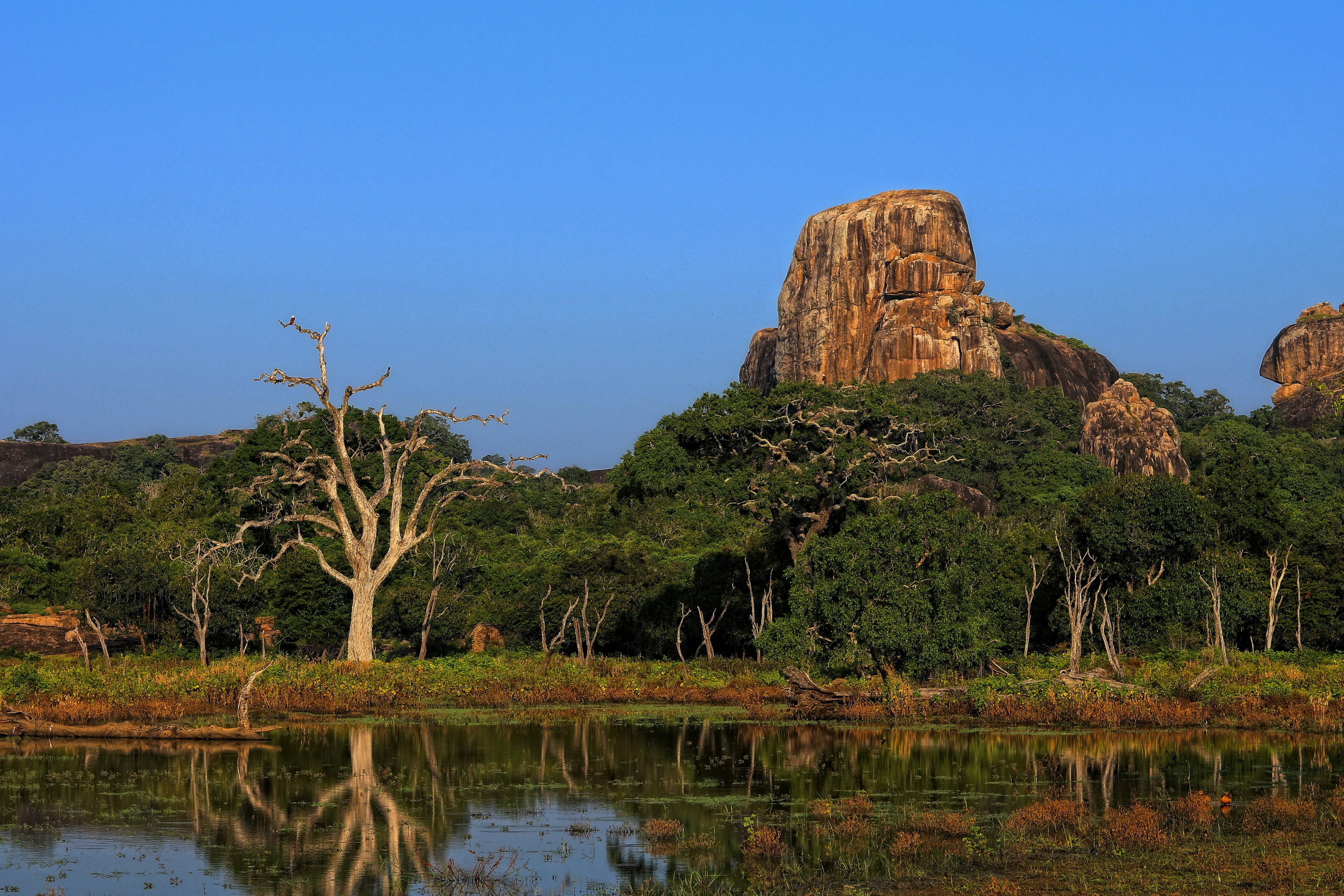
Explore Yala National Park - Sri Lanka Travel, Asia
Tucked away in Sri Lanka’s southeastern corner, Yala National Park is where wild nature meets deep tradition. Known worldwide for its leopard population, the park is also home to elephants, sloth bears, crocodiles, and hundreds of bird species. Beyond wildlife, Yala opens doors to a cultural landscape dotted with ancient temples, Buddhist ruins, and coastal villages. For travelers seeking more than just a safari, Yala offers a chance to explore eco-tourism, local communities, and sacred heritage sites.
Population: The Yala National Park area doesn’t have a human population.
Economy: The economy around Yala National Park thrives on a blend of eco-tourism, agriculture, and local services. Safari tours, eco-lodges, and cultural experiences drive steady income for nearby towns like Tissamaharama and Kataragama, supporting thousands of families.
Landmarks: Famous for Block I of Yala and wildlife encounters, including elephants, sloth bears, crocodiles, and exotic bird species.
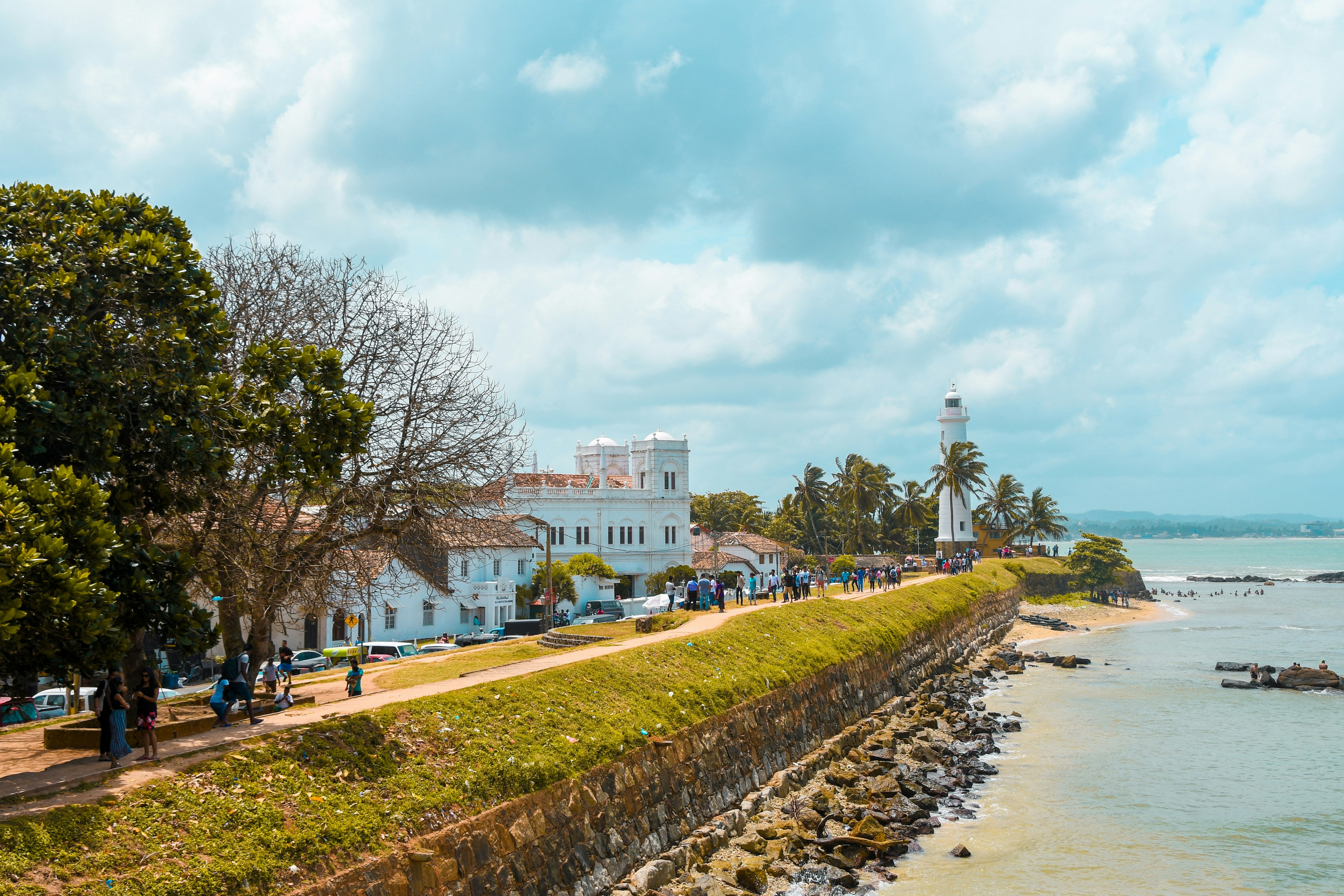
Explore Galle - Sri Lanka Travel, Asia
Nestled on Sri Lanka’s southern coastline, Galle is a vibrant city where history meets the sea. Its cobbled streets, colonial architecture, and serene beaches make it a must-visit destination for travelers seeking a blend of culture, adventure, and relaxation. A UNESCO World Heritage site, Galle captivates visitors with its Dutch Fort, bustling markets, and friendly locals. Whether you’re exploring the ramparts at sunset or savoring fresh seafood by the shore, Galle promises an unforgettable journey into Sri Lanka’s heritage.
Population: Approximately 113,000 in 2023.
Economy: Galle’s economy thrives on tourism, trade, and fisheries. The city’s historic fort, colonial architecture, and coastal charm draw thousands of international visitors each year, making tourism its main economic driver. Fishing remains vital for local livelihoods, supplying fresh seafood across the region.
Landmarks: Famous for the Galle Fort, Dutch Reformed Church & Maritime Museum, and Unawatuna Beach.
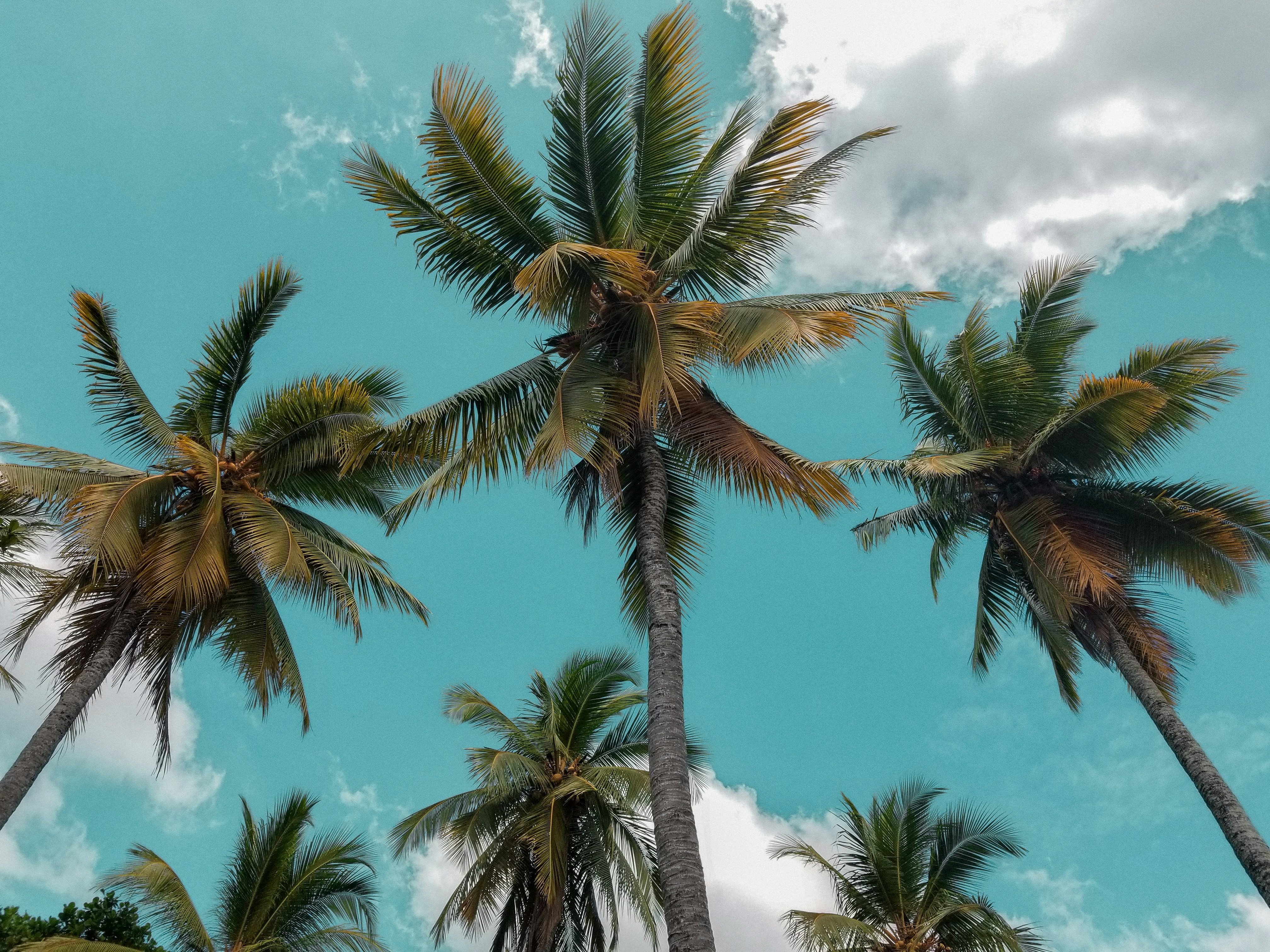
Explore Bentota - Sri Lanka Travel, Asia
Nestled along Sri Lanka’s southwestern coast, Bentota is a tropical paradise that blends golden beaches, vibrant culture, and thrilling adventures. Famous for its calm waters, luxury resorts, and scenic river estuary, Bentota has become a top destination for travelers seeking both relaxation and authentic experiences. From serene beach walks at sunrise to adrenaline-pumping water sports, this coastal town offers a perfect balance of leisure and exploration. With its proximity to Colombo and Galle, Bentota is easy to reach, making it an ideal stop for both short escapes and extended holidays.
Population: Approximately 37,000 in 2023.
Economy: Bentota’s economy thrives mainly on tourism, which drives local businesses such as hotels, restaurants, and wellness retreats. The town also benefits from fishing, coconut cultivation, and handicrafts like wood carving and batik textiles. Many residents rely on the growing demand for water sports and Ayurvedic treatments, making tourism the backbone of both income and employment in the area.
Landmarks: Famous for Bentota Beach, Bentota River Safari, and Kande Vihara Temple.
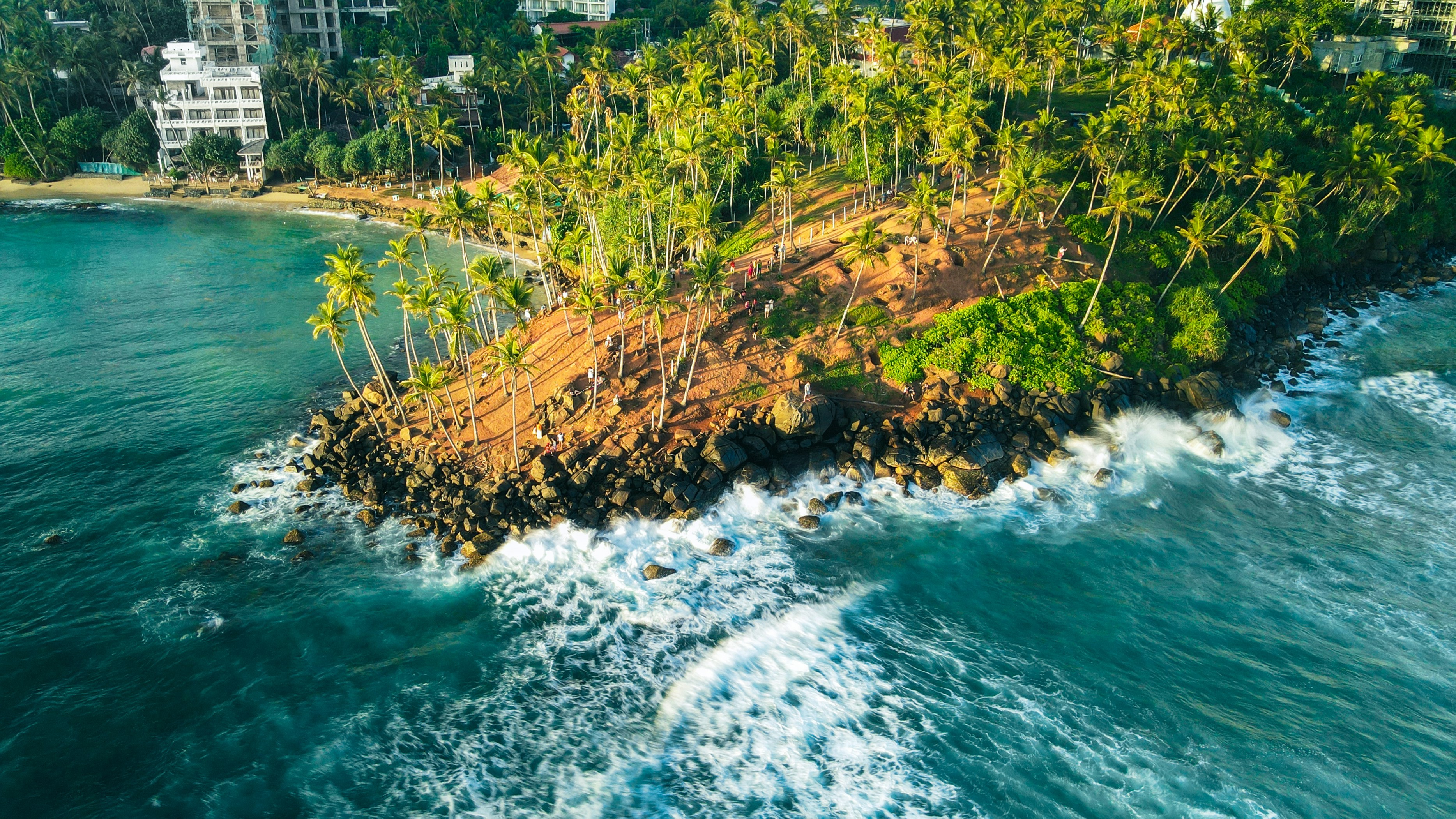
Explore Mirissa - Sri Lanka Travel, Asia
Mirissa is a charming coastal town on Sri Lanka’s southern shoreline. Known for its golden beaches, turquoise waters, and vibrant marine life, it has become a must-visit stop for travelers exploring the island. Many come for whale watching, surfing, and sunset views at Coconut Tree Hill, but Mirissa offers much more than postcard beauty. The fishing boats you see anchored by the bay carry generations of stories. Local traditions, delicious cuisine, and a laid-back rhythm of life shape every visitor’s experience.
Population: Approximately 4,700 in 2023.
Economy: Mirissa’s economy is largely shaped by its coastal location. Fishing has long been the backbone of local livelihoods, with generations relying on the Indian Ocean for income. In recent decades, tourism has become the main driver of growth, thanks to whale watching, surfing, and beachside hospitality.
Landmarks: Famous for Mirissa Beach, Coconut Tree Hill, and Parrot Rock Bridge.
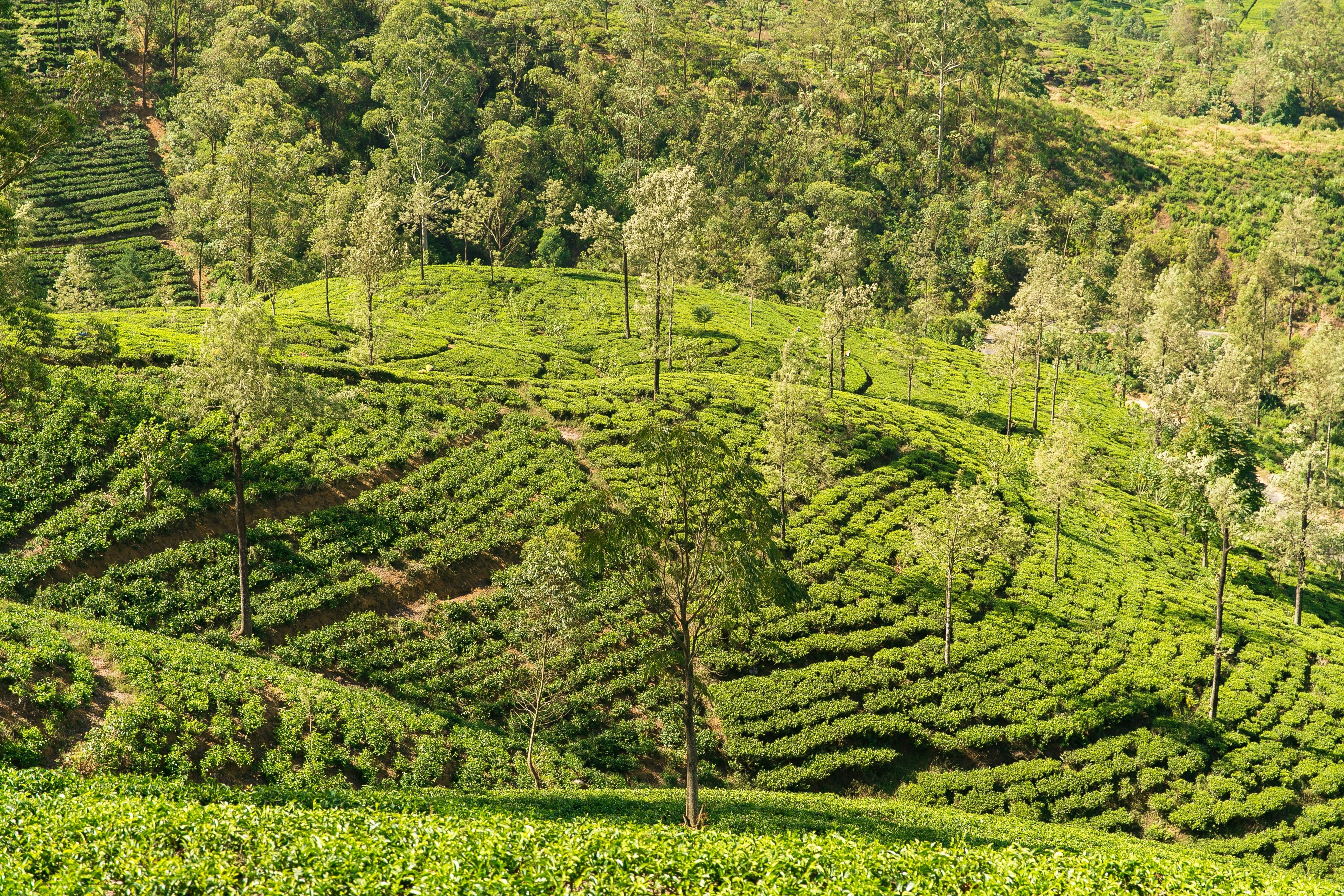
Explore Nuwara Eliya - Sri Lanka Travel, Asia
Tucked away in the Central Highlands of Sri Lanka, Nuwara Eliya is often called “Little England”. With its rolling tea plantations, cool misty mornings, and colonial charm, this mountain town feels like a step into another world. Travelers come here to breathe fresh air, walk through flower gardens, sip the finest Ceylon Tea, and enjoy a pace of life far from the island’s busy cities. Whether you’re drawn by scenic landscapes, heritage architecture, or the warmth of its people, Nuwara Eliya is a destination that blends nature, culture, and history in perfect harmony.
Population: Approximately 781,000 in 2023.
Economy: Nuwara Eliya’s economy thrives mainly on tea production, as it sits in the heart of Sri Lanka’s central highlands, famous worldwide for Ceylon Tea. The city also benefits from a growing tourism industry, attracting visitors with its colonial charm, cool climate, and scenic landscapes.
Landmarks: Famous for Gregory Lake, Hakgala Botanical Garden, and Victoria Park.
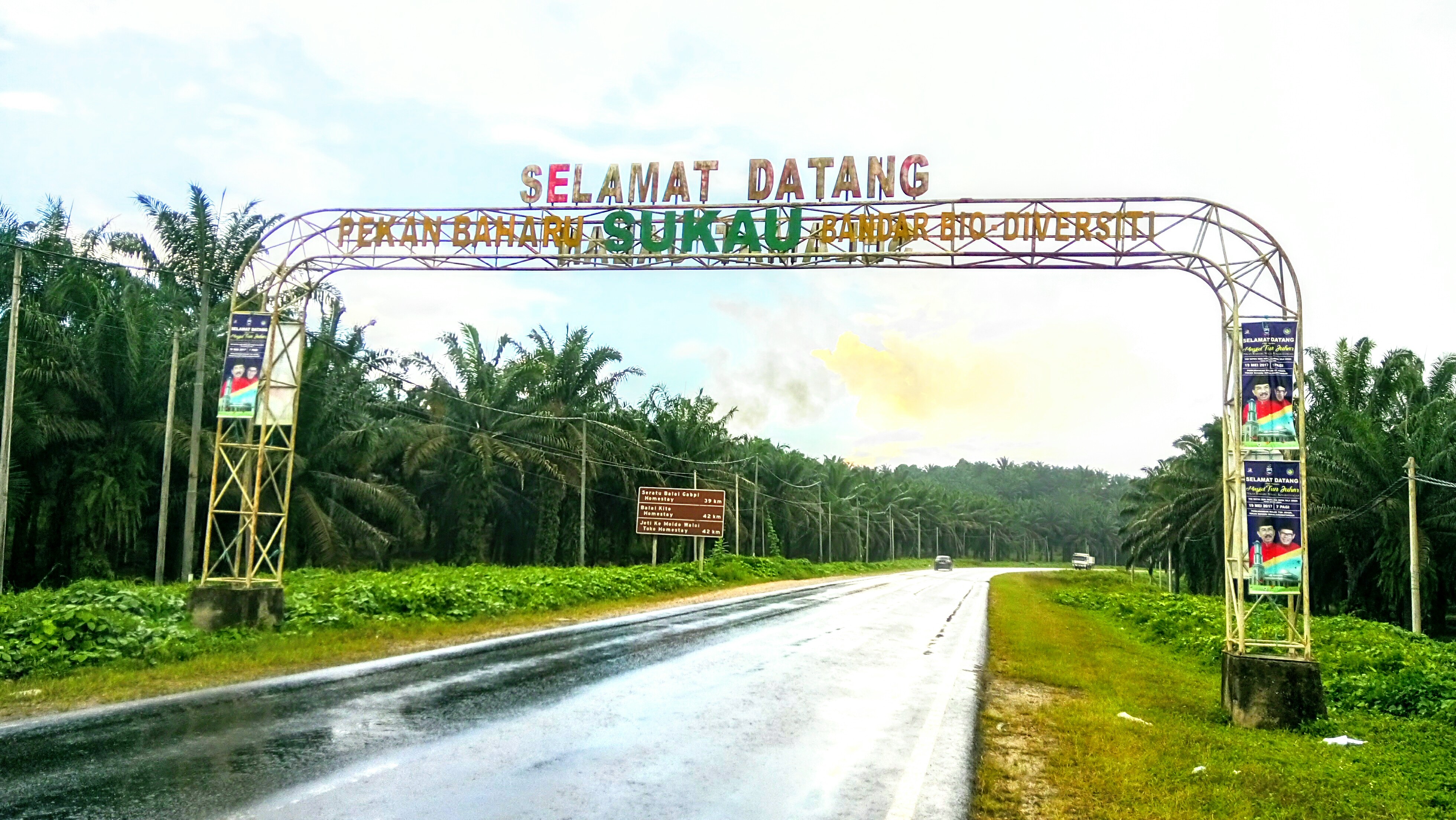
Explore Sukau - Malaysia Travel, Asia
Nestled on the banks of the Kinabatangan River in Sabah, Malaysian Borneo, Sukau is a destination where wildlife, culture, and conservation come together. Known as one of Asia’s top spots for river safaris and eco-tourism, this quiet village offers a front-row seat to encounters with Bornean orangutans, pygmy elephants, proboscis monkeys, and exotic birdlife.
Population: Approximately 1,400 in 2019.
Economy: Sukau’s economy is shaped by its riverine location and natural resources. Traditionally, the Orang Sungai community relied on fishing, small-scale farming, and forest gathering for their livelihood. Today, the village has shifted toward eco-tourism, with river cruises, jungle trekking, and homestays providing income.
Landmarks: Famous for the Kinabatangan River cruises, Gomantong Caves, and Ox-bow lakes and wetlands.
